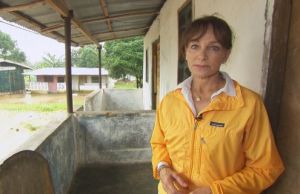The Lessons of Farrah’s Story

We watched “Farrah’s Story” last night and, at one point in the story, Farrah is shown reading letters from average people with cancer who found inspiration in her courage, fortitude, determination, faith and optimism. Having cancer, or any other serious disease, often leads a patient to feel isolated and part of our motivation for starting this site was to show that you are not alone, that famous people also get the same diseases as you do and often provide inspiring examples of how they cope with their illness.
Unfortunately, there was a mixed message in Farrah’s story, that wealthy people can obtain expensive treatments that are beyond the reach of most of us. After her diagnosis, Farrah is shown flying back and forth to Germany, either in first class on Lufthansa or in a private chartered jet, to obtain heroic treatments that were not available and not recommended by her doctors back in Los Angeles. These treatments were ultimately unsuccessful and only Farrah, her friends and family can know if the millions of dollars that were spent to prolong her life were worth it. But this is a choice almost none of the rest of us have.
Toward the end of the story, Farrah wonders: Why more research is not being done on anal cancer?
There are many, complex answers to these questions. Here we’ll provide only a few things for you to think about.
Anal cancer is a very rare cancer and, in deciding how to allocate research dollars, funding decisions are usually based on trying to create the greatest good for the greatest number of people. The U.S. National Institutes of Health spends almost $31 billion per year on medical research and you can see how much is spent on each disease on their web site http://report.nih.gov/rcdc/categories/ .
There has been a huge breakthrough in the prevention of anal cancer: the HPV vaccine which was developed to prevent cervical cancer (see entries on Jade Goody) is also thought to be able to prevent the vast majority of anal cancers as well. If it were up to you, would you spend, say, a million dollars
- to prevent ten thousand new cases of cancer or
- to extend by a few months, the life of a single patient who already has the disease?
We learned several other things from watching Farrah’s Story. Her older sister died from lung cancer (which is the second most common cancer in U.S. women, after breast cancer). Ryan O’Neal himself has cancer (a blood cancer called Chronic Myelogenous Leukemia or CML) which can be cured by Gleevec, a little orange pill that has been called a Magic Cancer Bullet and was developed by the Swiss pharmaceutical company Novartis.
What about treatments that are available in other countries but not in the U.S.? This could be because these treatments do not meet more stringent standards of evidence for effectiveness in the U.S. Or perhaps U.S. Food and Drug Administration (FDA) approval is lagging behind approval in other countries (the European Medicines Agency, EMEA, is the European equivalent of the FDA). This brings up the interesting issue of medical tourism which is patients traveling to other countries to receive medical treatment, although this is usually done because the cost of treatment for certain disease is much cheaper in some other countries.
Top ten cancers in the U.S.
http://apps.nccd.cdc.gov/uscs/


[AMAZONPRODUCT=0060010304] [AMAZONPRODUCT=097910792X] [AMAZONPRODUCT=159257808X]



























0 comments